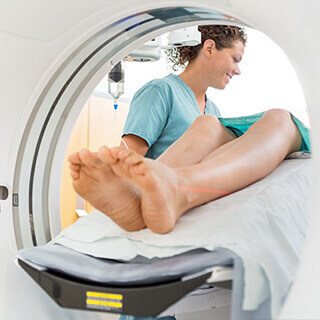Recent Study Reveals Efficiency and Effectiveness of Integrated PET/CT Scans
 Each year, nearly 200,000 women in the U.S. are diagnosed with early-stage breast cancer. Of that number, one in three will have cancer spread or “metastasize” from the breast to other parts of the body, often the surrounding bone. However, new findings revealed in a recent study published in the June 2010 issue of the American Journal of Clinical Oncology may help physicians more effectively and efficiently detect and locate potentially cancerous cells before they spread.
Each year, nearly 200,000 women in the U.S. are diagnosed with early-stage breast cancer. Of that number, one in three will have cancer spread or “metastasize” from the breast to other parts of the body, often the surrounding bone. However, new findings revealed in a recent study published in the June 2010 issue of the American Journal of Clinical Oncology may help physicians more effectively and efficiently detect and locate potentially cancerous cells before they spread.
There have been many questions surrounding the most effective way to detect metastases but, at present, there is no single standard approach employed by physicians. Bone scans, positron emission tomography (PET), and computed tomography (CT) are the most common approaches. Bone scans detect signs of metastatic disease by identifying bony regions in the process of growth or repair, which can be a sign of metastatic disease. PET assesses irregular biochemical activities associated with cancer cells. The CT creates anatomical images that isolate and analyze the size and shape of tumors.
In the study conducted at Memorial Sloan-Kettering Cancer Center, a team of researchers found that when administered simultaneously, PET/CT scans could be more effective than radionuclide bone scans for a multitude of reasons. One such reason is the PET/CT scan’s ability to offer an advanced diagnostic reach that looks beyond the bone and into other areas of the body. The integrated PET/CT scan also would be more effective than using either test alone.
Dr. Patrick Morris, a breast cancer specialist and the study’s lead author, is cautiously optimistic that there are several other advantages of the integrated PET/CT scan. These include convenience, reduced stress, and more timely therapy for patients.
“False positive radiology findings without a biopsy confirmation can lead to inappropriate therapeutic interventions and significant distress for the patient,” says Morris. “False negative findings, on the other hand, may result in delayed therapy, symptoms, and altered quality of life. Therefore, the development of a simple, reliable, and convenient test for imaging patients with suspected metastatic breast cancer is desirable.”
For further information, please visit Memorial Sloan-Kettering Cancer Center and Cancer.Net.
October 22, 2010







